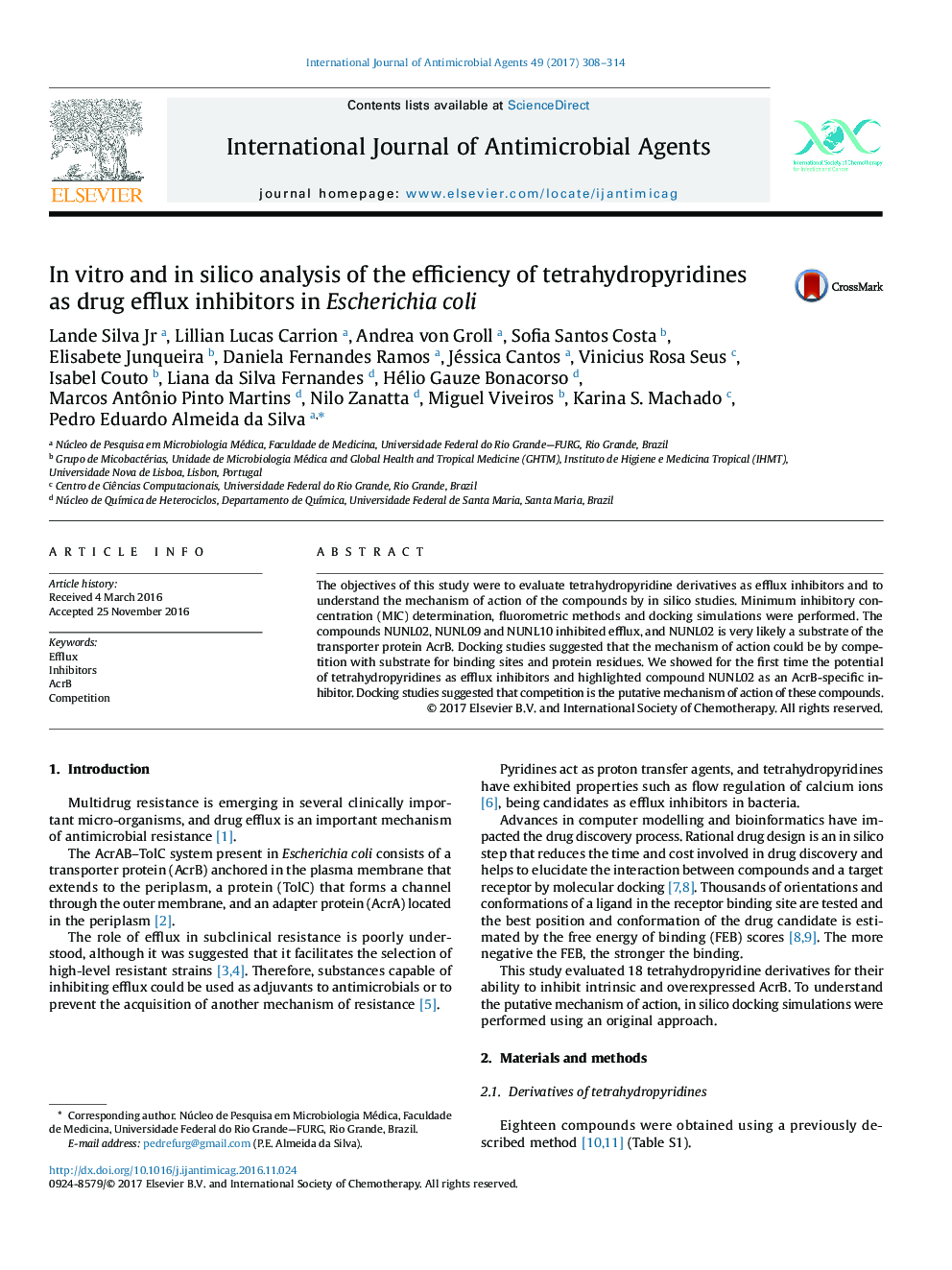| کد مقاله | کد نشریه | سال انتشار | مقاله انگلیسی | نسخه تمام متن |
|---|---|---|---|---|
| 5667113 | 1591745 | 2017 | 7 صفحه PDF | دانلود رایگان |

- Tetrahydropyridine derivatives are capable of inhibiting efflux by AcrB.
- Tetrahydropyridine derivative NUNL02 was found to be an AcrB efflux pump substrate.
- Competition for the same or near binding sites in AcrB is the likely mechanism of action of tetrahydropyridine derivatives.
- A method to find the best free energies of binding for large proteins with AutoDock Vina was developed.
- Interpreting docking results with energy curves and auxiliary tables made from results with AutoDock Vina is proposed.
The objectives of this study were to evaluate tetrahydropyridine derivatives as efflux inhibitors and to understand the mechanism of action of the compounds by in silico studies. Minimum inhibitory concentration (MIC) determination, fluorometric methods and docking simulations were performed. The compounds NUNL02, NUNL09 and NUNL10 inhibited efflux, and NUNL02 is very likely a substrate of the transporter protein AcrB. Docking studies suggested that the mechanism of action could be by competition with substrate for binding sites and protein residues. We showed for the first time the potential of tetrahydropyridines as efflux inhibitors and highlighted compound NUNL02 as an AcrB-specific inhibitor. Docking studies suggested that competition is the putative mechanism of action of these compounds.
Journal: International Journal of Antimicrobial Agents - Volume 49, Issue 3, March 2017, Pages 308-314